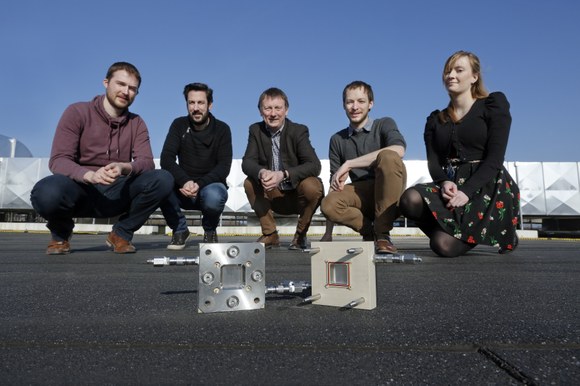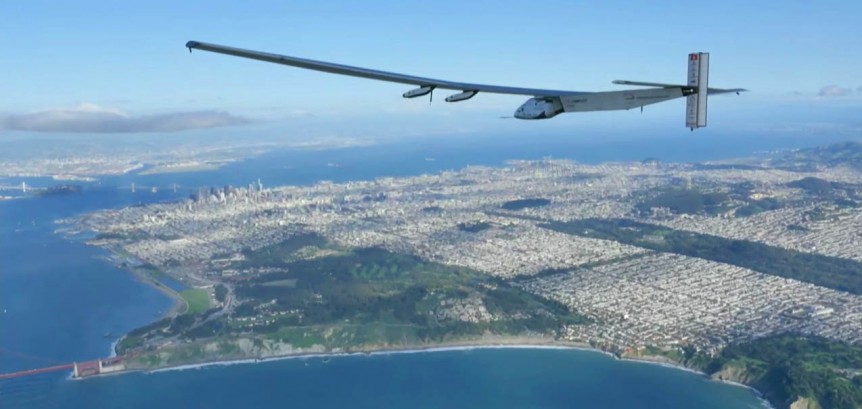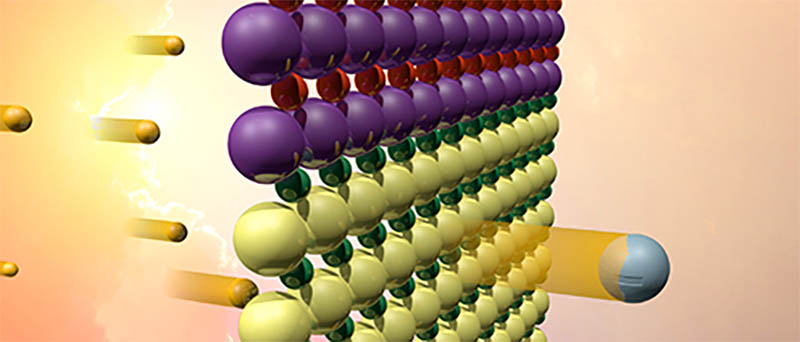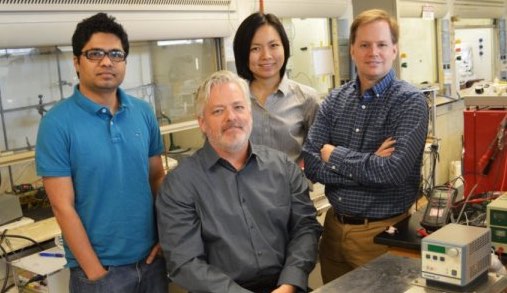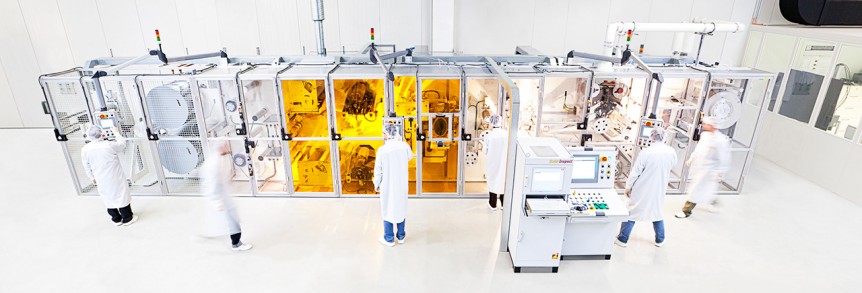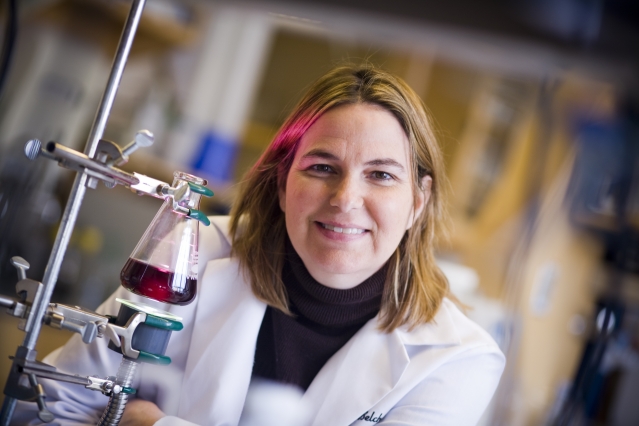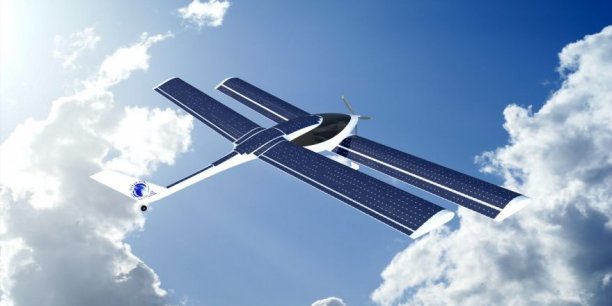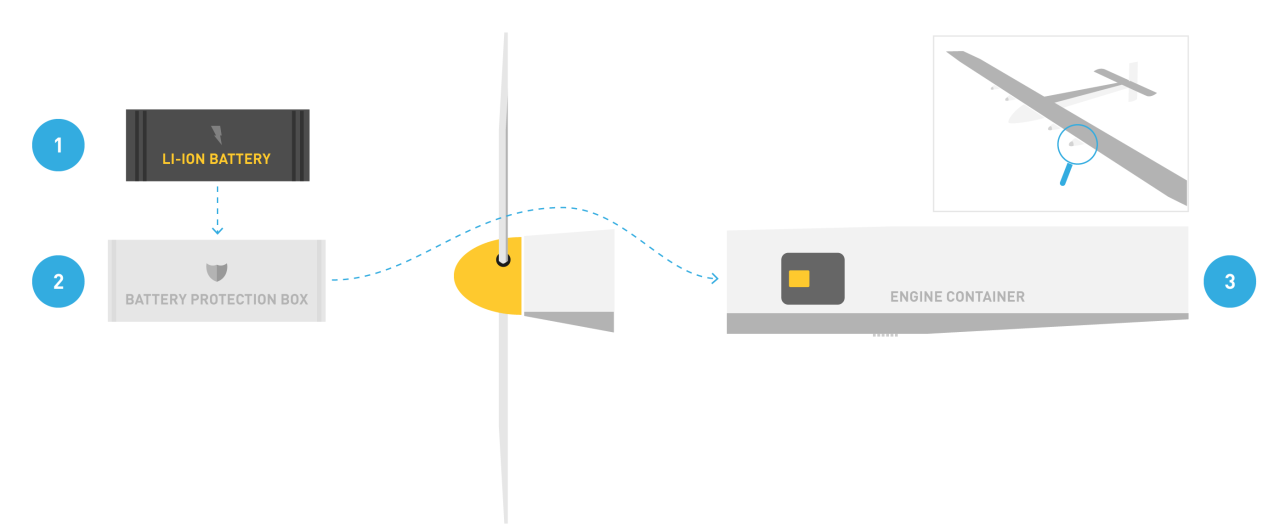Students at the University of Leuven, the Netherlands, have won the first Energy Award, sponsored by Febeliec – the association of industrial energy consumers, a Belgian trade association. Their miniature solar panel produces hydrogen gas when exposed to sunlight, not unlike “artificial leaves” of other researchers. The bioscience engineers crafted a small square panel that can be mounted to rooftops, including those of cars, to convert water vapor in the air to H2 that could feed fuel cells in the building or vehicle. This could also reduce CO2 “on a large scale to convert it into useful substances,” according to the team of young scientists. Generating electricity and producing hydrogen at the same time is a neat trick, but the roughly foot-square generators could be combined with more conventional solar cells to provide both electricity for immediate use and H2 to be stored for use on demand. This coexistence concept would help overcome the relatively low output for the current …
Solar Impulse Makes it to Mountain View
At 11:44 PDT, April 22, Solar Impulse 2, expertly piloted by Bertrand Piccard through tricky winds above Moffett Airfield, made its second landing in the United State, almost three years after Solar Impulse 1 had left on its flight eastward* and just in time to close out Earth Day. HB-SIA (Solar Impulse 1) made its trip across America in six hops, none lasting more than 21 hours and 22 minutes. HB-SIB (Solar Impulse 2) flew six hops between Abu Dhabi and Nanjing, China emulating the stages of the American crossing in distance and duration. Things reached record-setting levels after that. The 44-hour trip from Nanjing to Nagoya, Japan gave pilot Andre’ Borschberg a real workout, followed by his record-setting 117-hour epic voyage from Nagoya to Kalaeloa, Hawaii. Fellow pilot Bertrand Piccard finished the trans-pacific flights with a 62-hour flight to San Francisco. The pilots could not do this without a large ground crew, seemingly perpetually busy with preparations, maintenance, and …
Bouncing Light Around Between Electrons and Holes
Bob Elliott of the comedy team Bob and Ray died February 3, reminding your editor of one of the many routines Elliott and Ray Goulding performed on live radio. It involved an inventor who had perfected a solar panel that could run the lights in your house all day, but couldn’t keep them going at night when they were really needed. That was over 50 years ago, and investigators at the Pacific Northwest National Laboratory, Argonne National Laboratory, SuperSTEM, and the University of Oxford have come up with a possible solution to Bob and Ray’s quandary. Combining two oxides, one containing strontium and titanium (SrTiO3) and the other lanthanum and chromium (LaCrO3), they came up with a material that uses the interface between the two oxides to absorb visible light and produce electrons (negative charges) and holes (positive charges), which might be “useful for catalyzing reactions, such as producing hydrogen fuel.” The oxides have to be kept apart, though, because otherwise, “they …
One step to Liquid Hydrocarbon Fuels from Thin Air
University of Texas at Arlington chemists and engineers have converted carbon dioxide and water directly into useable liquid hydrocarbon fuels – in one step. The “simple and inexpensive new sustainable fuels technology” used concentrated sunlight, high pressure and heat to remove CO2 from the air and even revert oxygen back into the system. Researchers demonstrated that a one-step conversion of carbon dioxide and water into liquid hydrocarbons and oxygen can be performed in a photothermochemical flow reactor operating at 180 to 200 degrees C and pressures up to six atmospheres. Brian Dennis, UTA professor of mechanical and aerospace engineering and co-principal investigator of the project, explains, “We are the first to use both light and heat to synthesize liquid hydrocarbons in a single stage reactor from carbon dioxide and water. Concentrated light drives the photochemical reaction, which generates high-energy intermediates and heat to drive thermochemical carbon-chain-forming reactions, thus producing hydrocarbons in a single-step process.” Frederick MacDonnell, UTA’s interim chair of chemistry and …
Thin Film Solar Film Hits New Highs
Imagine covering your electric airplane with a light-collecting, energetic coating that generates enough juice to extend the battery-only range of your electric airplane. That possibility comes to mind from seeing recent articles about Heliatek’s organic solar cells, which demonstrated a solar-collecting efficiency of 13.2 percent. That’s only about one-third of what the best silicon solar cells can do, but those tend to be relatively thick, heavy, and brittle. Heliatek has managed to make a six-layer thin-film cell in which the active layers are only 250 nanometers (0.00000984252 inches) thick. Sandwiched within protective layers and weighing less than a kilogram per square meter (a few ounces per square foot) HeliaFilm™ can be wrapped around a radius of 10 centimeters (just under four inches). Performance figures are for opaque cells. Transparent cells which could be placed on windows or canopies have a transparency level up to 50 percent and an efficiency of six percent. HeliaFilm® is available in lengths from 0.3 to 2.0 …
Pollutants into Clean Energy: Batteries into Solar Cells
Editor’s Note: We will tackle some larger contexts for the blog, including not only the aeronautical uses of clean energy but the social, environmental and even economic implications of sustainable aviation. This item appeals because it demonstrates the possibility of transforming materials otherwise hard to live with into products that enhance life and even give some hope for budget solar cells. Angela Belcher has made battteries from viruses and works with biological solutions to energy production. In this instance, she and her colleagues have shown a path to a sunnier future for all. Her work combining quantum physics and biology in the example below highlights the potential in a true paradigm shift. Another, less exotic but no less exciting instance shows the broad-ranging and inventive minds at work in Dr. Belcher’s laboratory. In use since the Victorian Age, lead-acid batteries are among the most common energy storage devices, even after decades of being challenged by newer technologies. Almost every car has …
A Solar-Algae Hybrid for an Atlantic Crossing
Henri Mignet was never quite able to master an airplane with three-axis controls, and built at least seven flawed attempts at simplified controlled flight. His seminal try, the HM-8 Pou de Ciel (literally, Louse of the Sky, or more familiarly, Flying Flea) became first a matter of celebration for amateur aviators and then a cause of scandal, being banned in Britain following a series of fatal crashes. The “formula”, as proponents called Mignet’s tandem wing configuration, was sorted out after wind tunnel tests in England and America uncovered the flaw that caused the craft to pitch down in an unrecoverable dive. (For a well-illustrated history of Mignet’s design, see Henri Mignet and his Flying Fleas by Ken Ellis and Geoff Jones. Although out of print, used copies are available at Alibris and Abe Books, at higher prices than your editor paid for his new copy 25 years ago.) Later models of the formula have proven to be safe, stable fliers, …
Green Aviation at COP21
COP21, the Congress of Parties 21 – the 21st gathering of nations and organizations working toward an agreement on reducing greenhouse gases, has concluded with what many conclude to be a historic turn from fossil fuels to cleaner, greener means of powering the world’s economy. At a gala “SolutionsCOP21 – Celebrate the Champions Night” at the Grand Palais on the Champs-Élysées in Paris, leaders in demonstrating clean energy solutions were honored and awarded. Globe-straddling solar aviation and electric commuter helicopters showed a few of the environmentally conscientious directions aviation has taken and in which sustainable flight can take flight in the near future. Eraole, Mignet’s Formula Redefined Eraole, with its first motor run at COP21, is a tandem-winged cruiser that will fly on a combination of solar power and biologically-derived algae fuel driving its single electric motor. The 14 meter wings and large horizontal tail provide space for 43 square meters (462.8 square feet) of 24-percent efficient solar cells. These …
Solar Impulse Down, But Not Out
Following its cliff-hangar five-day flight from Nagoya, Japan to Kalaeloa Airport, Hawaii, Solar Impulse is undergoing an extended period of tender loving care, dedicated rebuilding of its battery packs and insightful reflection on how to avoid future issues. Landing July 3, 2015, Pilot André Borschberg broke the world records for distance along a course (6,825.4 kilometers – 4,231.5 miles), Straight distance, and Duration for solar aviation, as well as the world record for the longest solo flight ever (80 hours and 5,663 km. – 3,511 miles), according to the Solar Impulse web site. If all had gone according to plan, Bertrand Piccard would have hopped on board a few days later and headed for the United States on the second leg of the trans-pacific part of the the team’s around-the-world voyage. Unfortunately, the rigors of a test flight over Nagoya, followed by a climb to 28,000 feet too soon after that test flight, seems to have doomed at least some of the batteries. …
Second Sunseeker Duo Calendar Here
Eric Raymond, designer and builder of three solar-powered aircraft, along with his wife Irena, take some pretty astonishing pictures. They work from a unique aerial platform, the Sunseeker Duo they completed and now fly together. Their travels and adventures are large-screen worthy, and they share them with their 2016 Calendar. Eric explains. Dear Solar Flight and glider fans, We had the most amazing year ever flying the SUNSEEKER DUO here in Europe and we would love to share the vistas with you! Just now we are finishing our photo calendar in time for Christmas, and offering it for anyone’s gift to a pilot or themselves. Since our flight in the SUNSEEKER DUO to the Swiss Alps was very successful and picturesque, most of the images are from that adventure this last August. (Editor’s Note: the preview here is but a hint of the full glory of the final product. Your editor receives no freebies, but gladly pays full price for …

